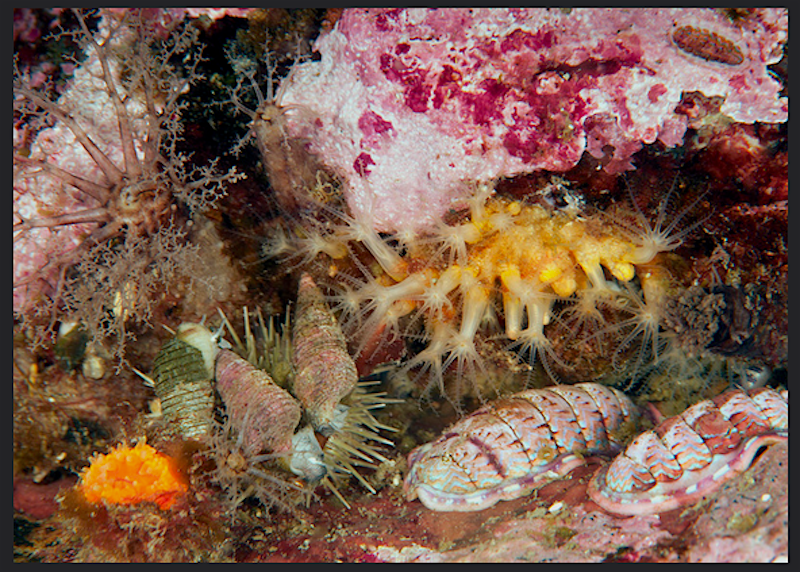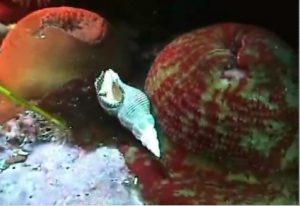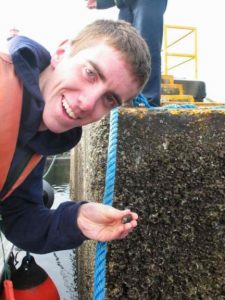Habitat: Middle intertidal zone on wave-washed, coralline-encrusted rocky shores. Can be found on protected outer coasts and quiet bays anywhere from Alaska, south to central California.
At Race Rocks, they occur frequently in the mid to low intertidal range. They have often shown up in intertidal transects.
Description: The Spindle Whelk has a thick, mainly grey shell with many spiral threads of varying sizes. The soft body of the animal is white. Shell is heavy; whorl sculptured with spiral grooves and 9 round, low axial swellings. The siphonal canal is short and coloured grey or brownish.
Additional Information: The spindle whelk is a scavenger that feeds mainly on injured animals. Prey can include littorines, snails, barnacles, worms and limpets. The Spindle Whelk’s proboscis can extend fully out of the shell which allows for gregarious feeding on large prey. Additionally, the proboscis permits the consumption of prey that are already being digested by the everted stomach of sea stars. Its main predator is the sea star. Spindle whelks are most active when submerged in calm water; otherwise it is a largely inactive animal. The longevity of the spindle whelk is unknown, however one which is 40 mm long could be 15 years or more in age.
Kingdom: Animalia
Phylum Mollusca
Class Gastropoda
Subclass Caenogastropoda
Superfamily Buccinoidea
Family) Buccinidae
Genus Lirabuccinum
Species: dirum
Formerly Searlesia dira
Common Name dire whelk or spindle whelk
Other Members of the Phylum Mollusca at Race Rocks.
| Return to the Race Rocks Taxonomy and Image File |
|
 The Race Rocks taxonomy is a collaborative venture originally started with the Biology and Environmental Systems students of Lester Pearson College UWC. It now also has contributions added by Faculty, Staff, Volunteers and Observers on the remote control webcams. The Race Rocks taxonomy is a collaborative venture originally started with the Biology and Environmental Systems students of Lester Pearson College UWC. It now also has contributions added by Faculty, Staff, Volunteers and Observers on the remote control webcams.
|


